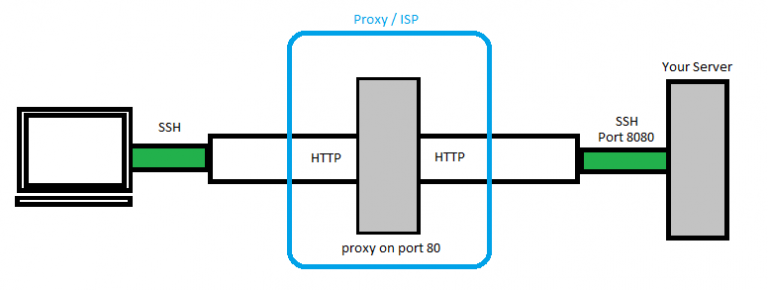
You have access to the office’s SSH server at, and your user account on the SSH server is bob. The syntax is: ssh -L local_port:remote_address:remote_port example, let’s say the database server at your office is located at 192.168.1.111 on the office network. To use local forwarding, connect to the SSH server normally, but also supply the -L argument. You can use any command line or graphical tool to access the database server as if it was running on your local PC. The SSH server sits in the middle, forwarding traffic back and forth. So, when you attempt to access the database server at port 1234 your current PC, “localhost”, that traffic is automatically “tunneled” over the SSH connection and sent to the database server. Now in order to access the port 80 on 192.168.0.1, you need to start your browser or any other tool and simply type localhost : 80 or localhost : 110 and press enter.Now, your SSH tunneling is done.To do this, you establish an SSH connection with the SSH server and tell the client to forward traffic from a specific port from your local PC-for example, port 1234-to the address of the database’s server and its port on the office network. Putty now starts to listen to Port 80 and port 110 on the local system. You would have received it when you created on account on the remote SSH server.

It's as simple as that.STEP 4: Now click on the OPEN button and you will be prompted to enter SSH server username and password. Repeat this for all blocked systems and ports you which to tunnel to.STEP 3: Based on this configuration, now the local port 80 on your system will connect to Port 80 on your system will connect to port 80 on 192.168.0.1 (using SSH connection to SSH server) and the local port 25 will connect to port 25 192.168.0.22 (using SSH connection to SSH server) and so on. For example, I entered 110 in the source port field & 192.168.1.110:110 in the Destination field then clicked on Add. In the Port field: 22.STEP 2: Click on Connection >SSH>Tunnels and enter the IP addresses and port numbers of the Remote blocked Systems you wish to tunnel to. In the Hostname field, enter the IP address of the SSH server that you want to connect to.
#Ssh tunnel 80 download#
This can be done in 4 steps:STEP 1: Download Putty and click on Session. Let's assume that your firewall has blocked outgoing connections to remote port 25 and 80 and you want to use Putty and SSH to bypass this blocking mechanism and access the remote systems. Now that we know the broad steps that are involved in SSH tunneling, let's get down to the specifics. Putty opens a local port that you can now connect to in order to access the remote SSH server.STEP 3: Once you have connected to the remote SSH server that has unblocked access to the Internet, you can then use it to access all your favorite blocked websites on the Internet. (Outgoing Port 22, encrypted communication will be allowed by most locals firewalls ). This SSH server can be in any part of the world.STEP 2: Use Putty to create an encrypted SSH connection to the remote SSH server. This can be done in 3 steps:STEP 1: You need to either set up your own SSH server with unblocked Internet access or register an account on a SSH server that has unblocked access to the Internet.

This means that you may able to use Putty to create a SSH tunnel connection tunneling through the firewall (outgoing remote port 22) to a remote server to which you have access and then use that remote SSH to connect to the blocked Remote System.

However, you really want to connect to Facebook.What do you need to do? Just because the Firewall has blocked access to remote port 22, it doesn't mean that it would have also blocked outgoing connection to remote port 22 (SSH).

#Ssh tunnel 80 portable#
The portable version can be download from this address 's assume that you're connected to the Internet and are behind the firewall of your college or company that doesn't allow you to make outgoing connections to remote port 80 ( HTTP or websites) of a particular website (i.e. Putty is also available as a portable application that you can run from your USB pendrive.
#Ssh tunnel 80 free#
It can be downloaded free for coast from.
#Ssh tunnel 80 password#
It protects your sensitive information like your username and password by encrypting it and securely and transmitting it on the Internet.Putty is a free, open source client that allow users to establish connection using SSH, Telnet and other network protocols with remote systems. For example, if you were to connect to a remote server, then there's no guarantee that your username and password would be transmitted in secure encrypted format.This is where SSH comes in. It usually uses Port 22 for all communications. SSH (Secure Shell) is a protocol that allows two devices exchange data with each other security in an encrypted format, hence protecting the data being transmitted.


 0 kommentar(er)
0 kommentar(er)
